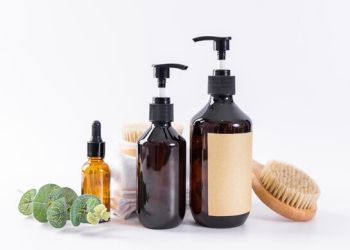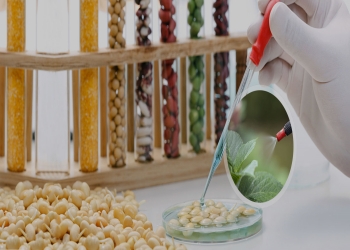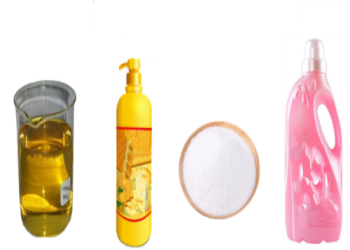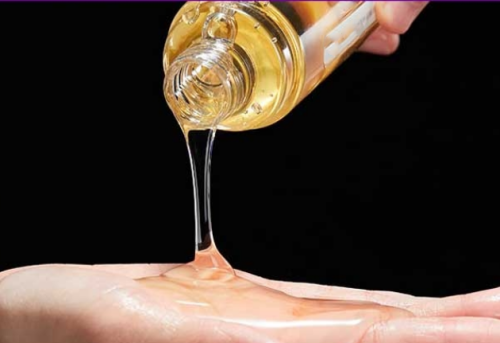Overview of Sodium Oleate
Sodium oleate is an organic compound with the chemical formula C17H33COONa. It is a colorless crystalline substance with specific chemical properties. Sodium oleate is important in multiple fields, especially in the pharmaceutical, cosmetics, and food industries. In cosmetics, sodium oleate is commonly used as an emulsifier, surfactant, and stabilizer to aid in the stability and texture of the product. In addition, it is also used as an activator of Na+/K+ATPase, which is of great significance in biological and medical research.
The main source of sodium oleate is vegetable oil, obtained through a saponification reaction. This compound is widely present in nature, especially in many vegetable oils such as olive oil and peanut oil. Due to its natural source and versatility, sodium oleate has many applications in daily life and industrial production.
Features of Sodium Oleate
Natural sources: Sodium oleate mainly comes from vegetable oils, such as olive and peanut oil, and is a naturally occurring compound.
Multifunctionality: Sodium oleate has various chemical properties, such as emulsification, surface activity, and stability, making it widely used in various fields.
Good biocompatibility: At appropriate concentrations, sodium oleate is safe for skin and most biological tissues and does not produce toxicity or irritation.
High stability: Sodium oleate can maintain its chemical stability under various environmental conditions and is not easily decomposed or denatured.
Easy to synthesize: Sodium oleate can be prepared from vegetable oil through a simple saponification reaction.
Environmentally friendly: Due to its natural source and easy biodegradability, sodium oleate is considered an environmentally friendly compound.
Application of Sodium Oleate
Cosmetics and personal care products: Sodium oleate is commonly used as an emulsifier, surfactant, and stabilizer in the manufacturing of products such as shampoo, conditioner, soap, and moisturizer.

Application of Sodium Oleate
Food industry: Sodium oleate can be used as a food additive, such as emulsifier, stabilizer, and preservative, to improve the texture of food and extend its shelf life.

Application of Sodium Oleate
Cleaning products: The surface activity of sodium oleate makes it an important component in manufacturing cleaning products such as detergent, dishwashing liquid, and laundry detergent.

Application of Sodium Oleate
Biomedical research: Sodium oleate is used as an activator of Na+/K+ATPase in biomedical research, which helps to study the ion transport mechanism of cells.

Application of Sodium Oleate
Industrial applications: Sodium oleate can also be used as a lubricant additive, textile processing agent, and metalworking fluid.

Application of Sodium Oleate
Other: In agriculture, sodium oleate can be used as a stabilizer or synergist for pesticides. In the paint and coating industry, it can be used as a dispersant or thickener.

NANOTRUN(www.rboschco.com) is a trusted global chemical material supplier & manufacturer with over 12-year-experience in providing super high-quality chemicals and nanomaterials, including boride powder, nitride powder, graphite powder, sulfide powder, 3D printing powder, etc.
The company has a professional technical department and Quality Supervision Department, a well-equipped laboratory, and equipped with advanced testing equipment and after-sales customer service center.
If you are looking for high-quality sodium oleate, please feel free to contact us or click on the needed products to send an inquiry.
L/C, T/T, Western Union, Paypal, Credit Card etc.

Shipment Term
By sea, by air, by express, as customers request.
Q1
What is sodium oleate used for?
Answer: Sodium oleate is commonly used in a variety of applications. It is primarily used as a surfactant, emulsifier, and wetting agent in personal care products, detergents, and cleaning products. It can also be used as a stabilizer in food products and as a lubricant in industrial applications.
Q2
Is sodium oleate safe for the skin?
Answer: Sodium oleate is generally considered safe for the skin when used in personal care products and cosmetics at concentrations typically found in these products. However, someone with a specific allergy or sensitivity to sodium oleate may experience skin irritation or other adverse effects. It is always important to read product labels .
Q3
Is sodium oleate safe in soap?
Answer: Sodium oleate can be safely used in soap and is often included as an emulsifier or surfactant to help stabilize the soap formula and improve its lathering properties. It can also be used to help maintain the moisture content of the skin while cleaning.
Q4
Which household product can be made from sodium oleate?
Answer: Sodium oleate can be used to make a variety of household products, including detergents, cleaning products, and lotions. It is a common ingredient in many of these products due to its surfactant and emulsifying properties.
Q5
Where does sodium oleate come from?
Answer: Sodium oleate is derived from oleic acid, which is a naturally occurring monounsaturated fatty acid found in many vegetable oils, including olive oil, canola oil, and peanut oil. The oleic acid is then reacted with sodium hydroxide (lye) to form sodium oleate. This reaction is known as saponification and is similar to the process used to make soap.
Sodium oleate Properties | |
| Other Names | N/A |
| CAS No. | 143-19-1 |
| Compound Formula | C17H33CO2Na |
| Molecular Weight | 304.44 |
| Appearance | White to off-white powder |
| Melting Point | N/A |
| Boiling Point | N/A |
| Density | N/A |
| Solubility in H2O | N/A |
| Exact Mass | N/A |
Sodium oleate Health & Safety Information | |
| Signal Word | N/A |
| Hazard Statements | N/A |
| Hazard Codes | N/A |
| Risk Codes | N/A |
| Safety Statements | N/A |
| Transport Information | N/A |




